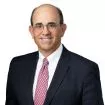Seyfarth Synopsis: On Tuesday, March 3, 2020, the Supreme Court heard oral arguments in Liu et al v. Securities and Exchange Commission, in what some thought would be a landmark case on the SEC’s power to seek disgorgement from a court for violations of securities laws.1 In questioning both parties, the Justices did not seem inclined to eliminate SEC disgorgement outright, but instead drilled down on whether that remedy should be limited to the return of net profits to victims of securities fraud.
Background—the Liu Case Challenges the SEC’s Disgorgement Power
Since the 1970s, federal courts hearing SEC enforcement proceedings have frequently ordered defendants to disgorge the profits they made by violating securities laws.2 In 1990, Congress specifically authorized the SEC to seek monetary penalties for such violations—though Congress did not explicitly reference a power to seek disgorgement of ill-gotten gains, the SEC “continued its practice of seeking disgorgement in enforcement proceedings.”3 Issues surrounding this practice came to the Supreme Court in 2017, when it ruled in Kokesh v. SEC that, for purposes of applying a statute of limitations on civil penalties, SEC disgorgement “bears all the hallmarks of a penalty,” noting that disgorgement “is imposed for punitive purposes” and, “in many cases, SEC disgorgement is not compensatory” to the victims of the securities violation at issue.4
This past November, the Supreme Court granted certiorari to hear an appeal that challenged the SEC’s disgorgement power.5 Petitioners, Charles Liu and Xin Wang, had been ordered to pay both the maximum statutory civil monetary penalty and also disgorgement of all funds that they had raised from investors.6 Building off of Kokesh, petitioners argued that Congress never authorized disgorgement as an available “penalty,” but rather only authorized the SEC to seek “injunctive relief, equitable relief, or civil monetary penalties.”7 The SEC has subsequently argued that it is entitled to seek disgorgement, as “Congress authorized all ‘equitable relief,’ and ‘disgorgement of improper profits’ has ‘traditionally [been] considered an equitable remedy.’”8
Oral Argument Suggests that SCOTUS Will Likely Limit—Not Prohibit—SEC Disgorgement
At oral argument held on March 3, the Justices of the Supreme Court did not appear inclined to prohibit outright the SEC’s disgorgement power. For example, almost immediately out of the gate Justice Ginsburg noted to petitioner’s counsel that Kokesh held that “for statute of limitations purposes, [disgorgement] is a penalty,” but “[f]or a different purpose, it need not be characterized [as] a penalty for determining whether the fraudster can retain the profits of the fraud. That’s something different.”9 Justice Kagan also considered this statutory scheme, noting that “Congress acted against a backdrop in which the SEC was routinely seeking disgorgement.”10
Even so, there was consistent suggestion in the Court’s questioning of both counsel that it might limit disgorgement in some way to ensure that disgorged funds are actually returned to victims.
In questioning petitioner’s counsel, Justice Alito, for example, posed a hypothetical scenario where disgorgement were “limited to net profits and ... every effort was made to return the money to the victims of the fraud,” asking “[w]ould that not fall within a traditional form of equitable relief?”11 Justice Sotomayor, in a follow-up to this question, noted “I’m not sure why [the statute] doesn’t provide ancillary jurisdiction ... assuming, as Justice Alito has just stated, that the accounting is only for net profits that are given to the actual people injured.”12 Justice Kavanaugh too, brought up in questioning “Justice Alito’s two conditions,” that is, “net profits, returned to victims,”13 as did Justice Kagan who asked about the SEC’s powers “suppos[ing] we were to reject your broad argument and focus the question [on the return to investors] issue and also on the net profits issue.”14 Justice Gorsuch also indicated similar thinking, asking petitioner’s counsel why the Court could not “maybe make it impermissible for the government to not make any effort at all [to return disgorged funds to investors] ... why can’t we police it, assuming we reject your primary argument?”15
Similarly, in questioning the SEC’s counsel, Justice Sotomayor quickly asked what the SEC’s position was “with respect to that broader question” of who gets “leftover amounts” after investors have been compensated, noting that “if the Treasury is getting it, we don’t really know if it’s being used to help investors.”16 Justice Gorsuch followed up on this line of questioning by asking whether the government would “have any difficulty with a rule that the money should be returned to investors where feasible.”17 The SEC’s counsel, after some back and forth, responded “I don’t see a problem with saying it is appropriate or necessary only if it is forwarded to investors if it is feasible to do that,” but that “Congress clearly didn’t think that a disgorgement award could be appropriate or necessary only if it was forwarded to investors ...”18
Takeaway
Views expressed by judges at oral argument do not always coincide with a final decision. But, as noted above, the consistency of the remarks by the Justices suggests that the Court will not take the opportunity to upend the SEC’s disgorgement power entirely. That said, the decision will likely include limitations, such as constraining the amount of disgorgement that the SEC can seek to net profits and restricting the use of disgorged funds to victim compensation.
Footnotes
1 The transcript of the March 3, 2020 oral argument is available here: https://www.supremecourt.gov/oral_arguments/argument_transcripts/2019/18-1501_097c.pdf.
2 See Kokesh v. S.E.C., 137 S. Ct. 1635, 1640 (2017), available here: https://www.supremecourt.gov/opinions/16pdf/16-529_i426.pdf.
3 Id.
4 Id. at 1643-1644.
5 Liu et al v. SEC, 18-1501. Docket available here: https://www.supremecourt.gov/docket/docketfiles/html/public/18-1501.html.
6 Liu et al v. SEC, Petition for Certiorari, at 1-2, available here: https://www.supremecourt.gov/DocketPDF/18/18-1501/101590/20190531140609515_Liu%20petition.pdf.
7 Id.
8 Liu et al v. SEC, Brief for Respondent at 5-6 (quoting Tull v. United States, 481 U.S. 412, 424 (1987)), available here: https://www.supremecourt.gov/DocketPDF/18/18-1501/128801/20200115181538414_18-1501bsUnitedStates.pdf.
9 Liu Transcript, supra n. 1, at 5:17-23.
10 Id. at 15:16-19.
11 Id. at 8:7-11.
12 Id. at 10:3-8.
13 Id. at 11:14-15.
14 Id. at 22:21-23.
15 Id. at 26:3-7.
16 Id. at 34:14-20.
17 Id. at 36:11-13.
18 Id. at 39:8-16.
The content of this article is intended to provide a general guide to the subject matter. Specialist advice should be sought about your specific circumstances.



